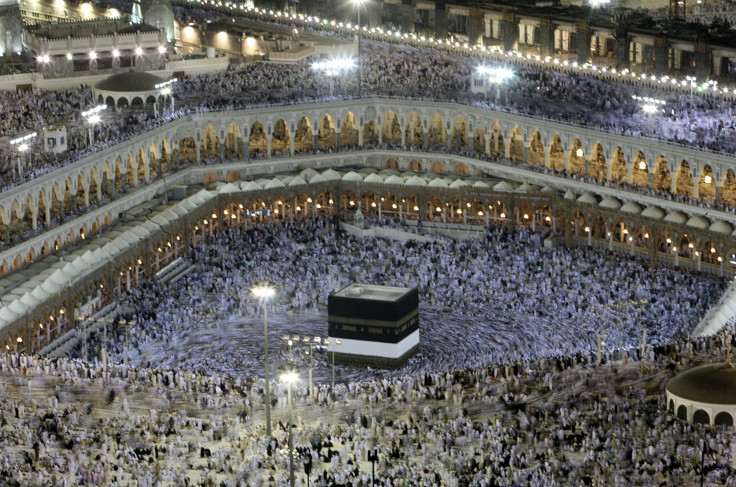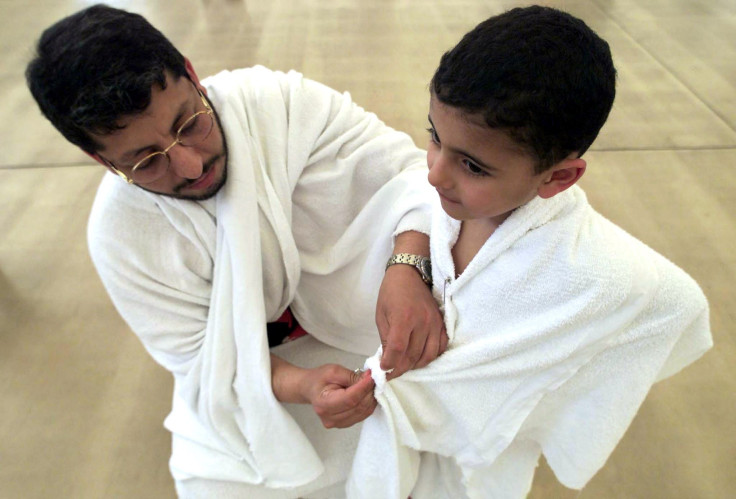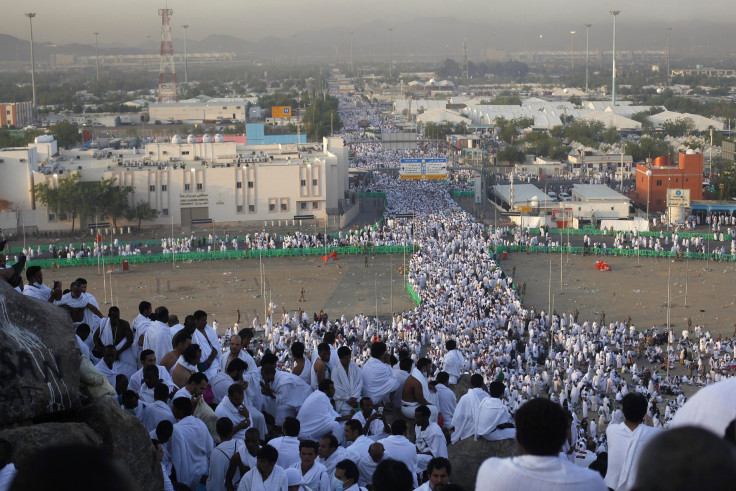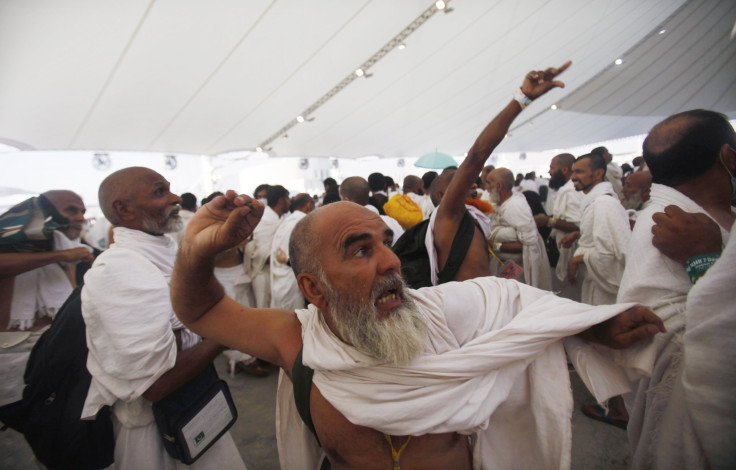When Is Hajj 2015? A Day-By-Day Guide To Holy Islamic Pilgrimage

More than a million Muslim pilgrims descend upon the holy city of Mecca, Saudi Arabia, by plane, sea and land each year. The ritual is one of the five pillars of Islam, considered a requirement of every financially capable and able-bodied Muslim at least once during their lifetime. The pilgrimage is a reenactment of rituals by prophets, as Muslims recount and retrace the steps of holy figures.
Because Muslims follow the lunar calendar, the exact date when a hajj will begin is dependent on a moon sighting. This year, it was expected to begin at sunset Monday, Sept. 21, and run through Saturday, Sept. 26. So what do Muslims do during hajj? Here's rundown of the weeklong process.
Preparation:
Ihram: Pilgrims enter into a state called Ihram. Men wear white seamless clothes. Women are forbidden from wearing face coverings. Clipping nails, shaving and sexual relations are forbidden.
Tawaf: Pilgrims circulate seven times counterclockwise around the Kaaba -- the black cube in Mecca that Muslims believe to be Islam's holiest site. Pilgrims start each cycle by kissing and touching -- or pointing, due to large crowds – the black stone inside the Kaaba. Muslims pray after they finish their seven circuits.
Sa’y: Pilgrims walk or run back and forth seven times between the hills of Safa and Marwah.

Day one:
Muslims are reminded of their hajj duties, spiritually prepare themselves and make their intentions known.
Day two:
Pilgrims leave early in the morning for Mina, a small city near Mecca, where they offer additional prayers and read from the Quran. They then leave for Mount Arafat, where they ask God for forgiveness. Muslims worldwide are encouraged to fast on this day.

Day three:
Pilgrims return to Mina, where they throw pebbles at pillars that represent Satan. Pilgrims are encouraged to recount the story of Satan’s attempts to dissuade Abraham from following God’s command to sacrifice his son -- a story that is mentioned in both the Bible and the Quran.
Pilgrims return to Mecca and again perform "tawaf." Commemorating Abraham’s willingness to sacrifice his son, pilgrims slaughter an animal and shave their heads. This aligns with Eid al-Adha, the day Muslims around the world also commemorate Abraham's devotion to God.

Day four:
Pilgrims again throw pebbles, symbolically stoning the devil at Mina.
Day five:
Pilgrims return to Mecca, perform tawaf around the Kaaba and drink water from the Zamzam well, believed to be holy because it provided respite for the prophet Ismael when, as a baby, he cried in his mother's arms for water.
© Copyright IBTimes 2024. All rights reserved.






















